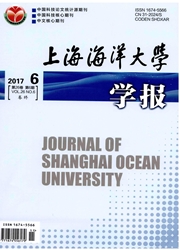

 中文摘要:
中文摘要:
The potential of 324 bacteria isolated from different habitats in polar oceans to produce a variety of extracellular enzymatic activities at low temperature was investigated. By plate assay, lipase, protease, amylase, gelatinase, agarase, chitinase or cellulase were detected. Lipases were generally present by bacteria living in polar oceans. Protease-producing bacteria held the second highest proportion in culturable isolates. Strains producing amylase kept a relative stable proportion of around 30% in different polar marine habitats. All 50 Arctic sea-ice bacteria producing proteases were cold-adapted strains, however, only 20% were psychrophilic. 98% of them could grow at 3% NaCl, and 56% could grow without NaCl. On the other hand, 98% of these sea-ice bacteria produced extracellular proteases with optimum temperature at or higher than 35℃, well above the upper temperature limit of cell growth. Extracellular enzymes including amylase, agarase, cellulase and lipase released by bacteria from seawater or sediment in polar oceans, most expressed maximum activities between 25 and 35℃. Among extracellular enzymes released by bacterial strain BSw20308, protease expressed maximum activity at 40℃, higher than 35℃ of polysaccharide hydrolases and 25℃ of lipase.
 同期刊论文项目
同期刊论文项目
 同项目期刊论文
同项目期刊论文
 期刊信息
期刊信息
